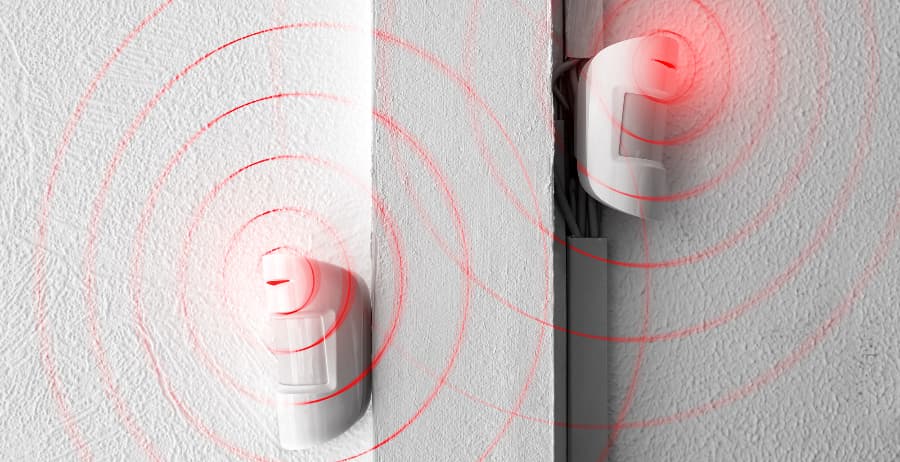How to cut down on motion sensor false alarms in your Scottsdale home

Motion sensors are essential aspects in a full-featured home security installation, as they’ll let you know if unexpected activity is going on at your house. Regrettably, they’re also vulnerable to false alarms, causing Scottsdale homeowners to lose sleep. If you’re looking for solutions, explore our tips on minimizing motion sensor false alarms.
What triggers motion detector false alarms?
Most household motion detectors utilize passive infrared (PIR) technology to find activity. They sense changes in infrared radiation within their field of view and can determine when something is in motion by its heat signature. False alarms are typically initiated by:
- Pets climbing on furniture or countertops
- Streams of direct light through a window
- Various heat sources, such as ducts and fireplaces
- Drastic humidity or temperature shifts, which cause components to be overly sensitive or non-reactive
Microwave motion sensors are another common option that discovers motion by constantly broadcasting and assessing electromagnetic waves. Referred to as active motion sensors, they recognize movement via modifications in the reflected signal. Any unforseen movement, like curtains swaying when your HVAC fan starts up, can initiate an alarm.
Tips for decreasing motion sensor false alarms at your Scottsdale home
Beyond a lack of sleep, motion sensor false alarms can be even more disruptive as they might desensitize you to genuine dangers. Furthermore, recurring false alarms may become an annoyance for local law enforcement and may influence response times in the future. Fortunately, you can help avoid them by adhering to these suggestions:
- Inspect the sensitivity levels of your equipment and adjust to your pet’s behavior and size.
- Avoid pointing them at busy spots like feeding stations, even if you have animal-friendly detectors.
- Avoid aiming motion sensors at windows exposed to heavy sunlight.
- Make sure rooms are properly insulated to prevent extreme temperature shifts.
- Frequently dust and wipe off equipment to keep sensors working properly.
- Check batteries and replace as needed. Some devices will even let you know when batteries are low.
- Get them installed professionally to ensure proper placement.
You could also invest in multi-function devices that utilize both active and passive means to identify activity, leading to greater accuracy.
How should you use motion sensors in your Scottsdale smart home?
Installing motion sensors in a modern smart home is a terrific way to improve your safety and convenience. You’ll be able to do the following:
- Get immediate notifications on your mobile device any time motion is detected. You might program them to notify you when your kids get home from school.
- Program interior cameras to record any time a motion sensor is tripped.
- Change temperature settings or lighting in accordance with your home’s occupancy. This feature can help lower energy expenses.
Top-tier smart home devices, like those from Vivint, continue to harness artificial intelligence (AI) to better detect real threats and decrease false alarms.
Build your Vivint smart home with advanced motion sensors
Get the top motion sensors in Scottsdale from Vivint when you design your comprehensive smart home. Our tools are pet-sensitive and allow you to program a variety of home automation actions. You’ll also enjoy a five-year battery life and immediate mobile updates. Reach out to (480) 681-6262 today to design your system.